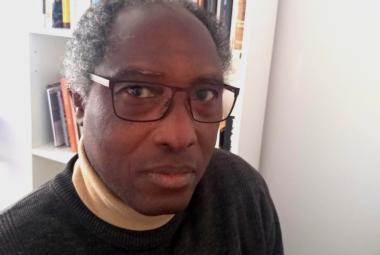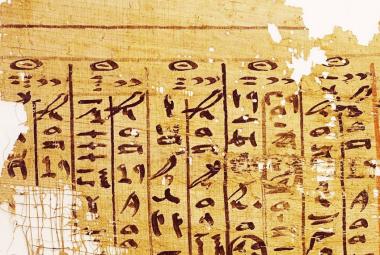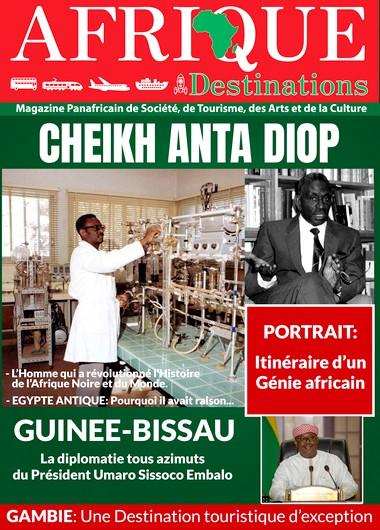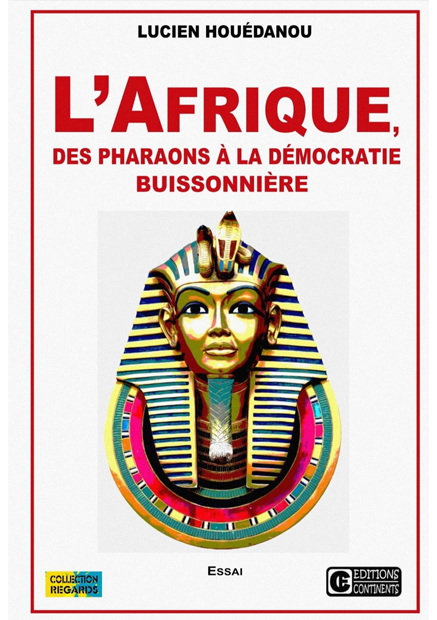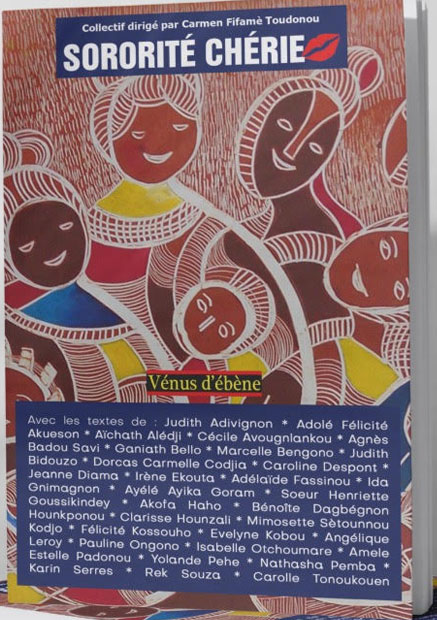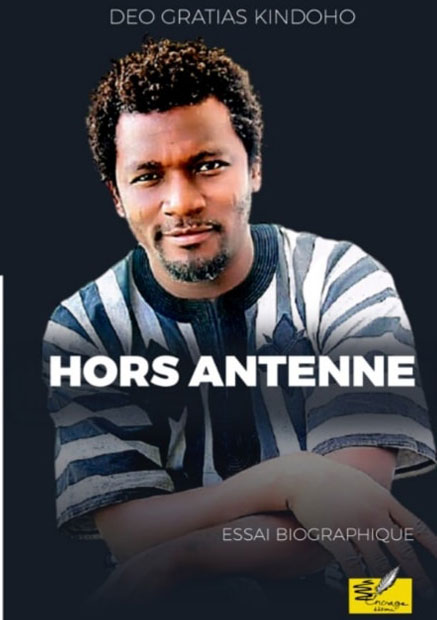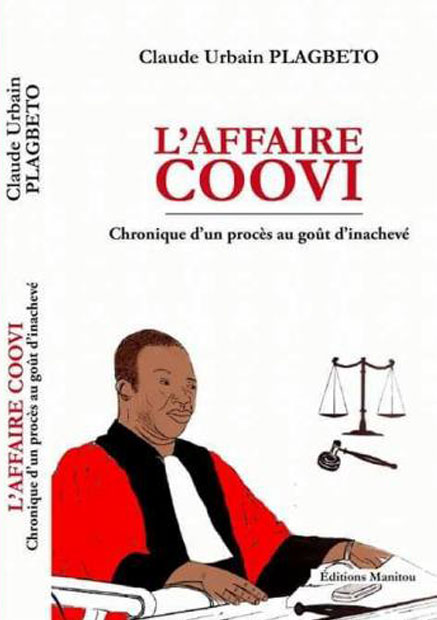Sebastopol to mean the "City of the Tsar", that is to say the city of Crimea annexed by Russia currently, owes its origins to the oldest Africa. There are certainly not many Africans who know this. However… And yet, Sebastopol draws its root from “Seba” which belongs to the substrate of the family of languages known as Niger-Congo languages. But it is a concept born in the Nile Valley at the time of the first "Agrarian Kings" or "Agrarian Chiefs" and which is the exclusive prerogative of the Egyptian-Nubian languages. Explanation.
“SEBA: Seba or Python of Seba is the Serpent that the ancient Egyptians called Âapep and the ancient Greeks Apophis. This deity is reputed to be the embodiment of Evil that must be overcome at all costs by thwarting its traps to achieve Good. Called Giant or Giant Serpent, it is the greatest enemy of the ancient Egyptians. And for good reason, he is held responsible for Darkness and Chaos by his opposition to God through his creatures. He is the sworn enemy of the Sun God. He is the very personification of absolute evil and the symbol of the original Chaos. Also, in Chapter 7 of the Book of the Dead, there is a formula to “avoid the abominable back of Apophis”. To successfully defeat Apophis would require and maintaining cosmic order would require more than knowledge.
Always appearing to threaten divine creation or individuals in their daily lives, the evil deity Apophis is often shunned but never defeated. Since it always comes back to the charge as opposed to Ra or Rê and all that exists by its creation. This is indeed its raison d'être: an eternal peril in the house.
In Nateni, Sohouma or Solama which can be translated as "Malicious", "Ruse", "Intelligence", "Science", "Ability", "Knowledge", "Feint", etc., is this kind of word-concept like Maât and of which it is difficult to circumscribe in just a few synonyms both the complexity and the field of application. Sohouma or Solama that we can simply write Souma has given birth to several other epithets such as: Souhéha or Souéha which means to teach or to train or to train or to initiate. Everything that derives from divine precepts can therefore be associated with this concept. Starting with the primitive name to designate the Divine or the Sacred, the Representative of God (Sou) on Earth itself and all that maintains balance and harmony.
It is difficult not to see through this concept, the word which would later become for the ancient Egyptians Seba or Sebo of which Professor Théophile Obenga speaks about the probable word which gave Sophia among the ancient Greeks. To reach this state of Sohouma or Solama, one would necessarily need a certain amount of knowledge that one could only acquire in the Per Ânkh or Houses of Life or Houses of Wisdom. We cannot be wise or even less wise if we do not have a minimum of knowledge about life in the society to which we belong and the world as it works.
Symbol of the god of stars and constellations Seba is associated with the Douât and everything related to it. Seba (Souéba) or Sebo (Souébo) is a tribal and feminine name among the Natemba which is the strict prerogative Descendants of the Scorpion’s Tribe. The male equivalent is Souéla (Souédoua) or Souélo (Souédouo). And it is the oldest known royal title in the Nile Valley. All the sources agree and tend to confirm that Sébastos or Sebaste and its derivatives Sebastokratōr or Sebastokrator, Sébastée and Sébastopolis which will later give the name Sebastian derive from this Grecization of an ancient royal name of ancient Nubia via ancient Egypt. Because Sébastien comes from the Greek word Sebastos which means Revered. This name emanating from the Latin Sebastianus borrowed from the ancient Greek σεβαστός or Sebastós which means Venerable to translate the title of the Roman Emperor who was then called Augustus by the Byzantine Roman Empire is the one who gave birth to Sebastopol, the annexed city of Crimea by Russia, to mean the City of the Tsar.
Jean Yoyotte and Pascal Vernus write in Dictionnaire des pharaons, Tempus-Perrin, 2004: “In -27, the Senate and the Roman people sanctify the full powers of the imperator, a military autocrat, by conferring on him the holy dignity of Augustus. The Latin titulature of Emperor Augustus is translated into Greek, which remains, as we know, the administrative language of the eastern provinces and, in the demotic acts as in the hieroglyphic cartouches, this pharaoh is therefore called "Utocrator Caesar Sebastos". The series of emperors who, from Tiberius, assume the quality of Caesar and the role of pharaoh will preserve this fundamental protocol on the walls of the temples, as can be read in Dendara, Esna, Kôm Ombo, Philae and other places. See Cleopatra, Romans”.
Just as Tsar is derived from the Roman name Caesar, so Sebastopol is derived from the Egyptian-Nubian name Seba.
If Seba was borrowed from ancient Egyptian, it is quite logical to think that the word Sophia could just as well derive from a contraction of Sohou-Nunfa or Sohoufa to designate the One from whom “Malice” derives, the “Cleverness”, “Intelligence”, “Science”, “Skill”, “Knowledge”, “Feint”, etc.
The Swallow is thus called Sebadyèkata or Seba-Douyè-Kata to literally mean The Bird that circles in the Land of Stars.
The name Sebennytos also derives from this root of Seba. He is better known by Tjebnouti or Tjebnoutjer (Tb-Nṯrt) in ancient Egyptian. It is the current equivalent of Tayakou, the political and religious capital of the Natemba *1”.
Even today, in the North-West of Benin Republic, any man designated by the Tribe of Descendants of Scorpion (Nanfa Kwèba) to be its Chief must abandon his own name to bear until his death this ancient ancestral name which crowns him. No other Chief of the other tribes can wear it in any way. Because it recalls despite the past millennia the primary function dedicated to the ancestral line, that is to say that of Priest-Sacrificer.
The Souélo, Souéba, Souébo of the Natemba is the same as the current Séro of the Batombou which is only an alteration of the word but which has lost its original meaning due to the great interbreeding of the Wasangari or Ouasangari with many other peoples they conquered or assimilated by settling in Borgu (Benin-Nigeria). To the point of forgetting its roots. Because, originally, it designates the “Chief of the Tribe” or “Agrarian King” or “King-Priest” in the early times of the Peoples of the Nile Valley.

CONCEPTS : The A-Z Indelible Evidence that
Ancient Egyptians Were Blacks from
Africa, Editions Complicités, Paris, April 26, 2022
We can read on the website of the government of Benin: “Nikki is a royal city and an example of community structuring since the 16th century. Initially, the Baatombu were settled there as a hierarchical people headed by a king. The capital of Nikki was Ouénou and rightly the king bore the name of Ouénou-Sounon. Around the 1500s, with the arrival of the Wassangari (then led by their chief Mansa Doro), the community was to reorganize further with the birth of chiefdoms by activity. Sero, the groom of Mansa Doro becomes the chief and founds a family there”. The history of the Kingdom of Nikki which would like Séro to be the groom of a certain Mansa Doro before becoming the founder of Nikki deserves a rereading in the light of new research and knowledge of the past of the migration known as the Kissira Migration. By distinguishing between the legend and if not the truth, at least the most plausible historical elements. Today, it is at least certain that the famous Kissira, the mythical ancestor of the Wasangari or Ouasangari migrants, did not come from Persia or Arabia but rather from Nubia (Sudan-Egypt today). Many historical elements bear eloquent testimony to this. And the rest is just legend.
By Marcus Boni Teiga
*1 - Excerpts from DICTIONNAIRE DES CONCEPTS DE L’EGYPTE ANTIQUE : Les preuves indélébiles de A à Z que les Egyptiens anciens étaient des Noirs d'Afrique (DICTIONARY OF ANCIENT EGYPTIAN CONCEPTS : The A-Z Indelible Evidence that Ancient Egyptians Were Blacks from Africa) published by Editions Complicités, Paris, April 26, 2022







